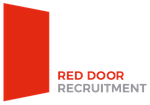Candidate newsletter | CV writing tips | 30/03/2020
Dear all,
We sent you an email last week to let you know that Red Door are still here to offer recruitment guidance and support during these uncertain times. Although most of our clients have put a freeze on recruitment needs currently, we are hopeful that on the other side of this pandemic, it will be business as usual!
So – now is the perfect time to get your CV looking marvellous, brush up on your interview techniques and perhaps carry out some training to ensure you are proficient in using Microsoft packages – we can help with all of the above!
Over the coming weeks, we will be sending out a newsletter to offer advice on a different subject. To kick if off, here is some information to assist you in writing the perfect CV!
CV Writing Tips
We’ve created a list of CV writing tips to follow to make your CV stand out from the crowd, as it is easy to underestimate how important a carefully constructed CV is to your job application. We have also included a CV layout template if you are unsure of where to start.
Typical CV Layout
• Name and contact details
• Summary paragraph
• Employment history — reverse chronologically
• Education
• Training courses/membership
• Key skills
• Achievements
• Interests
• References
Do…
• Use a clear font and spacing — chose a simple font to ensure you don’t distract from the content and make sure your spacing is equal between paragraphs
• Work in reverse chronological order — start with your most recent role (or qualification if you have just finished your education) and work backwards
• Use concise bullet points — they need to be easy to read and we recommend 5–7 points per job
• Keep it short and sweet — two-three pages maximum depending on how many roles you’ve had
• Include key skills — but keep these relevant to the job you are applying for, if you’re applying for an admin role it isn’t relevant you list plate spinning as a skill!
• Tailor your CV to individual roles — small changes can make a big difference, look at your summary, key skills and employment history to make sure the content is appropriate for specific roles
• Always include months and years of employment
• Explain your gaps briefly — it’s okay to have some time off from work, but we don’t need to know that you refurbished your bathroom in that time!
Don’t….
• Make grammatical mistakes — make sure that you correctly use capital letters, full stops, punctuation, and don’t overuse the ‘&’ sign
• Include irrelevant information — less is more! This includes oversharing personal information
• Use jargon, abbreviations or ‘slang’
• Go too far back in time — keep it in the 21st century, recent job roles only! Use ‘further history available on request’ if need be
• Switch between tenses — try and keep it in the first person and when writing about previous jobs don’t write in the present tense
CV Template:
Your Name
email@address.co.uk
mobile number and or home number
Home address
Personal Statement:
Your personal statement is perhaps the single most important part of your CV. Get it wrong and your chances of being invited to interview are drastically reduced. The aim is to highlight your professional attributes and goals, summarising why someone should consider your application.
Employment History:
(Your most recent job first)
Company Name – Location, Job Title, Dates of Employment including months and years
You should give your reader a brief introduction to what the company does and explain in bullet points a bit about the responsibilities your role covered.
Key Achievements:
• Provide a list of the key achievements you have made in your job
• Try to show evidence such as percentage increases or financial figures
• Provide enough information to entice your potential employers to call you
• Always keep examples relevant to the role you are applying for
Company Name – Location, Job Title, Dates of Employment including months and years
For older jobs you should keep the details slightly shorter, only offering information that will help you reach the next stage in your career.
Key Achievements:
• Try to avoid cliché phrases that don’t differentiate you as a candidate
• Always tailor your CV for each job application to match the requirements
• If something isn’t relevant, don’t be scared to leave it out
Education:
• University name, location, exam result
• College name, location, results
• School name, location, results
Briefly explain how the courses you studied have led you to your chosen career path.
Certificates & Memberships:
• Include any relevant professional qualifications here
• Make sure your most impressive accreditations are highest
• Add any professional associations of which you are a member
Key Skills:
Technical Skills
• Show that you have the knowledge required to succeed in the role
• Include computer software you have used and relevant training courses
Personal Skills
• Include some of your main attributes that are vital to the role
• Good communication and flexibility are qualities that all employers look out for
• If you are changing career these transferable skills will aid your application
Interests:
Outside interests enable a potential employer to gain an understanding to what motivates you, what personal skills you may have and how you will integrate into the team. Look at how job advertisements stipulate certain personality traits required for positions. Identify what they are and show how your hobbies can relate to their requirements.
References:
References are available on request
We hope you have found the tips and template useful, look out for the next weeks’ newsletter offering further support!
